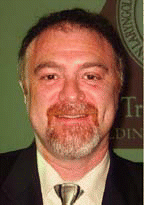Cost of Transnasal Esophagoscopy
In addition to the office treatment outcomes, Dr. Cole reviewed the costs of the procedures. He said that in order to set up the esophagoscopy system the doctors had to outlay $77,655.29 in 2002. That included $40,73.33 for the system and one scope; 19,991.20 for a second scope. A lamp kit cost $1,016.92 and a Steris machine cost $15,905.84, he said.
Dr. Cole said the yearly costs for supplies average about $1350 for the Steris supplies and $650 a year for film paper.
The mean age of patients was 55.4 years, and the average reimbursement was $365.56, with the break-even point for the medical practice at 18 months. These costs were presented in 2002 dollars.
When compared to rigid esophagoscopy, the difference in costs was exceptional. Whereas the cost for the office procedure was about $500 per patient, the cost for the rigid esophagoscopy is about $3,000 per procedure, which included anesthesia and facility fee estimate.
You can see there is a significant cost savings to the industry with transnasal esophagoscopy, Dr. Cole said. If you extrapolate that out to the 371 cases we did, you see that the cumulative costs of the procedures in our practice came to less than $200,000 compared with more than a million dollars that it would have cost the health care system if these cases had been done with rigid esophagoscopy.
Not That Black and White
There is a gray zone that complicates the picture, suggested session moderator Steven Zeitels, MD, the Eugene B. Casey Chair of Laryngeal Surgery at Harvard Medical School in Boston and director of the Center for Laryngeal Surgery and Voice Rehabilitation at the Massachusetts General Hospital.Would these patients all be getting rigid esophagoscopies? Or are these patients getting these studies with transnasal esophagoscopy because of the economics? I wonder if you were actually using transnasal esophagoscopy as a screening tool to find the patients who should undergo the more involved, longer rigid procedure.
Dr. Zeitels questioned where the procedure would fit with traditional algorithms of treatment-such as when would a patient be sent for a computer-assisted tomography examination of the transnasal esophagoscopy found something suspicious.
I’m not sure that this is a cost-savings technology because I’m not sure that the people who are getting the transnasal esophagoscopy would be the patients who would be getting rigid esophagoscopy, he said. There is a lot of interest in this.

Leave a Reply